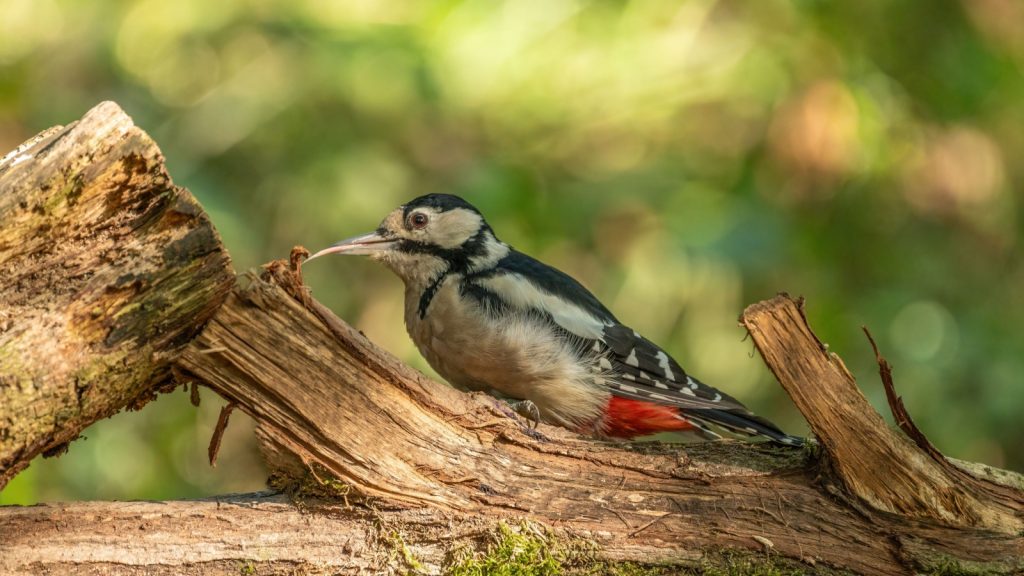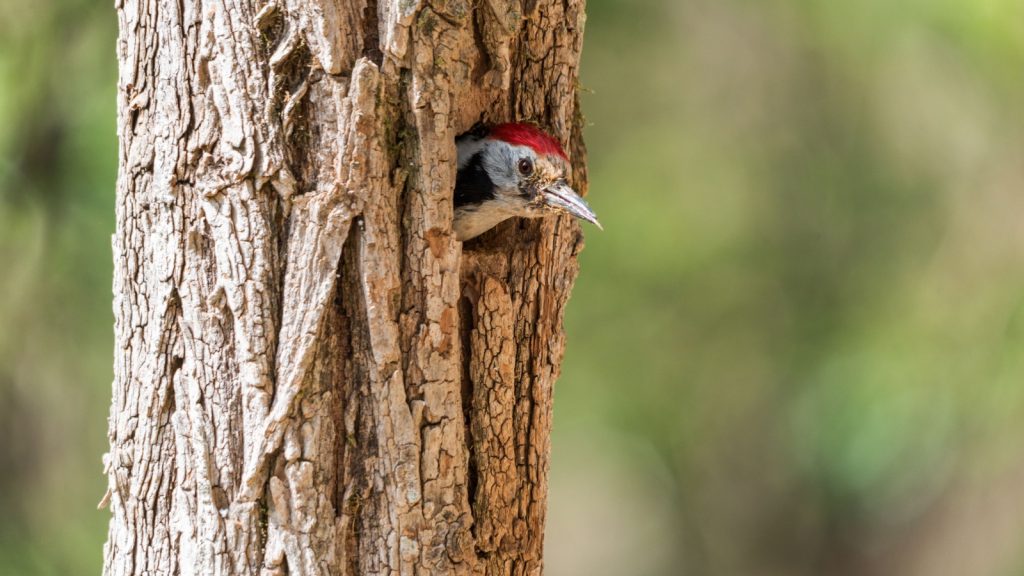Woodpeckers have always captured my attention, and I bet they’ve done the same for you. That distinctive tap-tap-tap against the bark of a tree, echoing through the woods, has a way of making you stop and wonder: why do they do it? These fascinating birds aren’t just banging their heads against trees for fun. They have some pretty remarkable reasons behind their relentless pecking. Let’s dive into why woodpeckers peck and what makes them so uniquely suited to their role in nature.
Foraging for Food
Woodpeckers have a distinct way of finding their meals, one that sets them apart from other birds. While many birds might scour the ground or branches for insects, woodpeckers go straight to the source.
Drilling for Dinner
When a woodpecker senses movement inside the bark, it starts pecking away. They’re not just chipping away at the surface—they’re on a mission to uncover a hidden feast of insects, larvae, and ants buried deep in the wood. It’s as though the woodpecker has a sixth sense for knowing where to strike. And with every hit, they’re inching closer to a hearty meal. Some species, like the pileated woodpecker, can even remove large chunks of wood to access ants and beetles inside the tree. Talk about persistence paying off!
The Secret Weapon: The Tongue

Once the hole is made, woodpeckers use their secret weapon—a long, sticky tongue. In fact, some woodpecker species have tongues that can be up to four inches long, far longer than the beak itself. Their tongues are barbed at the tip, allowing them to snag bugs hiding deep inside the bark. It’s one of nature’s cleverest feeding tools, and it makes sure no insect is out of reach.
Communication
While most birds sing, woodpeckers drum. It might not sound like a song to us, but in the woodpecker world, their drumming communicates important messages.
Drumming Up Attention
Woodpeckers create a fast, rhythmic drumming sound by pecking on resonant surfaces like hollow trees or even metal poles. This isn’t random noise. That drumming lets other woodpeckers know who’s in charge of the territory. It’s like a warning bell saying, “Back off—this spot’s mine!” The louder and faster the drumming, the more serious the claim.
Finding a Mate
For male woodpeckers, drumming serves another important role—it’s a mating call. The males use their percussive skills to attract potential mates, with each drum roll acting as an invitation. And yes, the ladies take notice. The strength, rhythm, and volume of a male’s drumming can indicate his fitness as a mate. It’s nature’s way of showing off in a way that’s both practical and impressive.
Home Sweet Home

When it’s time to settle down and raise a family, woodpeckers put those strong beaks to work once again—this time to create their homes.
Carving Out a Living Space
Woodpeckers don’t rely on pre-built nests. Instead, they use their beaks to carve out a nesting cavity in dead or decaying trees. This task requires both strength and patience, as they chisel out a space large enough for their young. Once complete, these cavities provide a safe, sheltered spot for raising chicks, away from predators and harsh weather.
Sizing It Up
You can usually tell what a woodpecker is up to by the size of the holes they’re making. Small, quick pecks? They’re likely foraging for food. A larger, rounder hole? That’s a sure sign they’re working on a nesting site. These nesting holes can vary in depth, but many are around 8 to 12 inches deep, providing plenty of space for a cozy home.
Built for the Job
Woodpeckers are perfectly designed for their pecking lifestyle, with special adaptations that let them hammer away at wood without getting hurt.
Natural Shock Absorbers
You might wonder how woodpeckers can pound away at trees without suffering from headaches or concussions. The answer lies in their anatomy. They’ve got thick neck muscles and a spongy, shock-absorbing tissue at the base of their skulls. This setup helps absorb the impact of their pecking, which can reach up to 20 times per second. Their beaks are also designed to take a beating—hard but slightly flexible to prevent cracks or breaks.
Marking Their Territory
Like many animals, woodpeckers are territorial, and they have a very distinct way of making sure everyone knows where their boundaries are.
The Woodpecker’s Warning
By drumming loudly against hollow wood, woodpeckers send a clear, unmistakable message to any other birds in the area: “This is my turf!” It’s like putting up a bright, bold “No Trespassing” sign for other birds. And just in case the message isn’t clear, they’ll keep drumming to reinforce the point. This behavior is particularly noticeable in springtime when they’re most focused on claiming territory and attracting mates.
The Downside of Drumming
As remarkable as woodpecker behavior is, sometimes their relentless drumming can cause problems for us humans.
Accidental Damage
Woodpeckers don’t always limit their pecking to trees. Wooden homes, utility poles, and even fences can sometimes fall victim to their need to drum or forage. While they’re not trying to be destructive, their powerful beaks can create real damage, particularly if they mistake siding for a tree. In some cases, this pecking can cause structural issues or holes that need repair. On the upside, their presence also keeps insect populations in check, which can be helpful for maintaining a healthy environment around your home.



